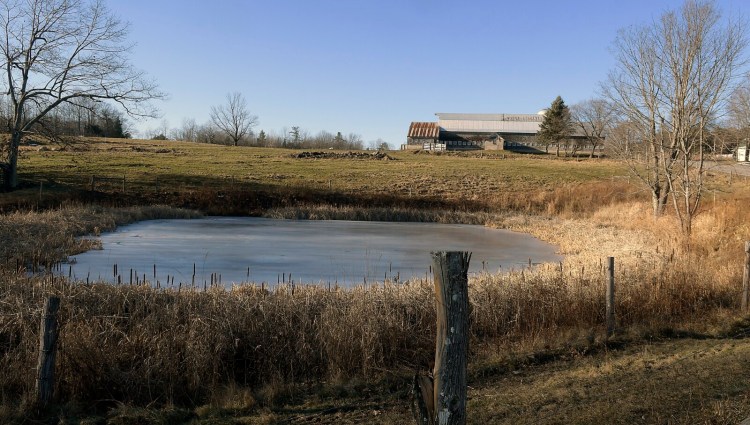Federal funding helped Tom Jacobs undertake conservation projects at his Mount Vernon cattle farm, projects that likely wouldn’t have happened without it.
Jacobs said he has received funding from the U.S. Department of Agriculture’s Natural Resources Conservation Service to do ditching and culvert work, control erosion in fields and fence off areas of his property so his cattle don’t contaminate soil and water with their waste. He said that without the funds, he “never would’ve even done” the projects because the cost would be too great and his bottom line is already precarious.
“You’ve got to have that help or you wouldn’t be able to do those projects,” he said.
On Tuesday, a working group made up of about 20 farmers, foresters and interested parties who own land in Lincoln and Kennebec counties recommended keeping funding levels for fiscal year 2021 the same as the current fiscal year 2020. The meeting was led by NRCS District Conservationist Peter Abello and took place at the Whitefield Fire and Rescue building.
Attendees spoke for a little more than two hours, eventually coming to a consensus that last year’s funding percentages were adequate. For fiscal year 2021, 65% of funds will go to projects related to animal waste, 18% will go to forestry-related projects, 10% will go to soil health-related projects and 7% will go to projects related to invasive species.
In addition to Jacobs, other local farmers also stressed these funds are critical to helping maintain their soil and water quality.
Nanne Kennedy, who raises Polwarth sheep at Meadowcroft Farm in Washington, said funds helped her construct an above-ground watering system for her animals, which keeps them away from streams that they could potentially disturb.
Kennedy, who attended Tuesday’s meeting as part of the working group, said she has received help through this program for more than 30 years for a handful of projects.
While Kennedy’s farm is in Knox County, she is an interested party to Tuesday’s discussion because she owns a 60-acre woodlot in Nobleboro, located in Lincoln County.
Kennedy said the program is critical for helping farmers be good stewards of the land by taking care of soil and water sources, calling it “regenerative farming.” She noted the program’s funds don’t cover all project costs, and the farmers and foresters still need to make big investments — which also provide money for local businesses and contractors — to carry out plans.
But Kennedy also said she thought the program could go further to help the farmer, the largely unsung “human resource” under the federal program. She said she would like to see a retirement or health insurance program for farmers so they “don’t have to die” on their farms.
“This program is talking about resource concerns, but it doesn’t address the human resource concern,” Kennedy said. “That hasn’t been factored into the program. I pray someday it will be.”
Because funding is not set each year, the local field offices use input from working groups to determine what percentage of the total funding each project type will receive. The local working group does not vote or have decision-making authority over the fund, but their input guides Abello’s final decision.
“You could deliver these programs in a bubble and not get any input from the outside,” Abello said. “It’s valuable (to get input from) the land-owners who are professionals in the field. I’m not a forester; I’m not a biologist, so it’s really helpful.”
He said the state received around $10 million to $11 million in funding from the Environmental Quality Incentives Program, which is a cost-sharing program for conservation projects. The first portion of that funding goes to statewide conservation initiatives that are recommended by the State Technical Committee, which functions as a statewide version of the local working groups. After that portion is expended, local field offices receive funds based on need. Abello said about $5 million to $6 million was allocated to Maine’s 14 local field offices last year.
Abello said the Augusta field office – which hands out funding for Kennebec and Lincoln counties – received $1.3 million this fiscal year. He said 60 projects were funded with that money.
Abello said he has until April to submit his recommendations to the state.
Send questions/comments to the editors.




Comments are no longer available on this story